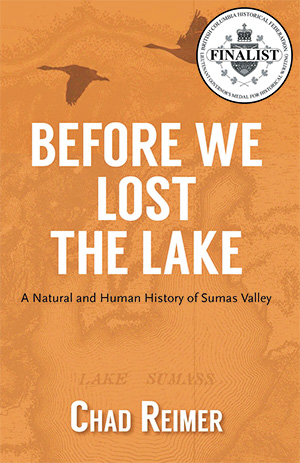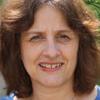“The draining of [Sumas Lake] and our settlement on your ancestral lands was devastating and demoralizing and disrespectful.”
That was part of an apology offered to Semá:th First Nation Chief Dalton Silver and his people by Richard Thiessen, president of the Mennonite Historical Society of B.C.
The statement was part of a July 24 event at the Semá:th longhouse east of Abbotsford, B.C. The event concluded the Memories of Migration train tour that marked 100 years since the start of Russlaender Mennonite migration to Canada in 1923.
In the 1920s, the B.C. government drained Sumas Lake, also known as Semá:th Lake. Located between Chilliwack and Abbotsford, the large, shallow lake was vital to the Semá:th people. Many Mennonites settled on the fertile lands that resulted from the draining of the lake.
“On behalf of those of us gathered here today who care about our Mennonite story, I want to acknowledge the pain and loss that the Semá:th people have endured as a result of the draining of the lake and our settlement on your lands,” said Thiessen. “I am sorry that this happened to you, and I am sorry for the role that our settler ancestors played in this devastating chapter of your lives.”
Thiessen approached Mennonite Central Committee (MCC) B.C. earlier in the year regarding a possible apology. The conclusion of the train tour seemed an ideal opportunity.
“I told MCC B.C. that I wanted to have some sort of public event with local Indigenous leaders that would acknowledge our impact on them, particularly in conjunction with the draining of the Sumas Lake by the B.C. government and the subsequent establishment of Yarrow, Greendale and Arnold on the newly created Sumas Prairie,” said Thiessen.
Bridget Findlay of MCC B.C. contacted local Indigenous leaders to help coordinate the event. About 200 people came, including the train tour group, representatives of MCC B.C., the Mennonite Historical Society of B.C., members of local Mennonite congregations and about 30 members of the Semá:th First Nation and other Indigenous groups.
The visitors were welcomed with words and song by Chief Silver and Semá:th councillor Chris Silver.
MCC B.C. executive director Wayne Bremner told the Indigenous group that he had gifts to offer, but wanted to emphasize that “it was not about us.” He first presented a quilt to Chris Silver. The quilt, made by the MCC quilting group, depicted a lion and a lamb to symbolize reconciliation and right relationship.
The other gift was that of song. Henry Engbrecht of the tour group led the Mennonites in singing the doxology. “We explained that it was a song to the Creator in thanks for the gifts given to us,” said Bremner. He told the Indigenous people present: “We thank God for the relationships with you.”
To conclude, Thiessen said, “By listening to each other’s stories and understanding each other’s pain and losses, we hope we can walk together on the path of reconciliation. We hope that this event can be a signal that we want to do things differently. We want to see you, hear you, understand you, respect you, and build a better relationship with you.”
Sharing history
Chief Dalton Silver, Semá:th First Nation
My grandpa used to say that in the Coast Salish Territory, Semá:th was the central location where the people used to gather.
The people gathered in the summertime, as we had Semá:th Lake [known in English as Sumas Lake] that once offered every species of fish right there at the front of our village. And in the wintertime, people gathered there from all parts of the Coast Salish Nation for the winter ceremonies. And I hope some time in the future that we can re-establish Semá:th as a central place amongst the Coast Salish, that we can gather again and maintain the ties that we once had as Salish People.
In the modern context, with our new surroundings, we need to interact with our new neighbours. We need to build relationships, share our histories so that we can better understand each other while maintaining our identity as Semá:th. We need to strengthen our position in the local economy and in society itself.
Source: sumasfirstnation.com
Lost Lake
Aaron Epp
 Truth comes before reconciliation. A 2018 book tells the story of Sumas Lake, how it was drained 100 years ago and how that impacted a First Nation.
Truth comes before reconciliation. A 2018 book tells the story of Sumas Lake, how it was drained 100 years ago and how that impacted a First Nation.
In Before We Lost the Lake: A Natural and Human History of Sumas Valley, independent scholar Chad Reimer recounts that prior to the 1920s, much of the Central Fraser Valley was covered by the lake. It was about 4,050 hectares, but during the spring freshet, it often expanded to three times that size.
The lake supported sturgeon, trout, salmon, grizzly bears and geese, and its wetland habitat was a destination for migrating birds and a breeding ground for both fish and waterfowl.
The lake was also central to the lives of the Semá:th people, a band of the Sto:lo Nation.
That started changing when settlers arrived in the 1800s. “No sooner had white immigrants settled into their new homes around Sumas Lake than they began thinking of ways to get rid of it,” Reimer writes. The opportunity to create rich farmland was too tantalizing to pass up, and the lake was drained between 1920 and 1924.
The Semá:th way of life vanished.
According to a review of the book published by the Mennonite Historical Society of British Columbia, Reimer mentions Mennonites only once in Before We Lost the Lake, but the relevance of the book to the Mennonite story is obvious.
“From 1929 onward, Mennonite immigrants and refugees arrived in the warm and fertile Fraser Valley,” the review says. “Their aptitude for farming soon raised them from poverty to prosperity. Yet, few of them—perhaps none—would have questioned the value of draining Sumas Lake, even though a landscape was devastated and, more importantly,” writes Reimer, “an aboriginal way of life was stolen.”





Add new comment
Canadian Mennonite invites comments and encourages constructive discussion about our content. Actual full names (first and last) are required. Comments are moderated and may be edited. They will not appear online until approved and will be posted during business hours. Some comments may be reproduced in print.